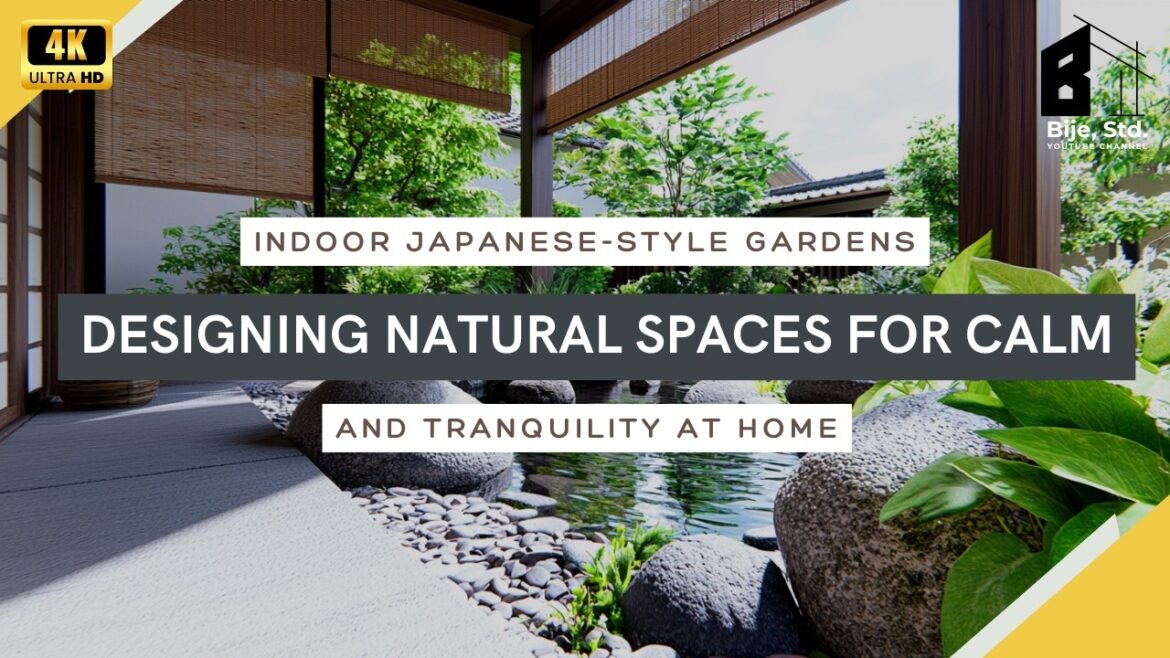Indoor Japanese-style gardens are designed to create serene and tranquil environments within the home, drawing inspiration from traditional Japanese garden aesthetics. These gardens typically incorporate natural elements such as rocks, water features, and a variety of plants, including bonsai and bamboo, which are carefully arranged to promote harmony and balance. The goal is to create a peaceful retreat that fosters relaxation and mindfulness, allowing individuals to escape the stresses of daily life and reconnect with nature.
The design of an indoor Japanese-style garden emphasizes simplicity and minimalism, often utilizing open spaces and negative space to enhance the feeling of tranquility. Pathways made of natural materials guide visitors through the garden, encouraging exploration and contemplation. Water features, such as small fountains or koi ponds, are commonly included to provide soothing sounds that further enhance the calming atmosphere. Additionally, the careful selection of plants based on their seasonal characteristics ensures that the garden remains dynamic and visually appealing throughout the year.
Incorporating an indoor Japanese-style garden into a home not only enhances its aesthetic appeal but also contributes to overall well-being. These gardens serve as a reminder of the beauty of nature and the importance of mindfulness, making them ideal spaces for meditation or quiet reflection. By designing these natural spaces thoughtfully, individuals can cultivate a serene environment that promotes calmness and tranquility, ultimately enriching their daily lives and fostering a deeper connection with the natural world.
Rustic, farmhouse, decor, interior design, cottage, shabby chic, vintage furniture, living room, japanese garden, indoor plants, tranquility, mindfulness, zen, home decor, nature inspired, serenity.
Introduction to Indoor Japanese-Style Gardens
An overview of the concept and significance of indoor Japanese-style gardens in promoting calm and tranquility.
Key Elements of Japanese Garden Design
Exploration of essential components, such as plants, rocks, and water features, that define the aesthetics of Japanese gardens.
The Importance of Balance and Harmony
Discussion on how balance and harmony are achieved in garden layouts, contributing to a peaceful atmosphere.
Selecting the Right Plants
Guidelines for choosing suitable plants, including bonsai and bamboo, to create an authentic Japanese garden experience indoors.
Incorporating Water Features
Insights into the benefits of adding water elements like fountains or small ponds to enhance tranquility.
Creating Pathways and Open Spaces
The role of pathways in guiding visitors and the significance of open spaces in promoting a sense of calm.
Seasonal Changes and Plant Diversity
How to incorporate seasonal plants to keep the garden dynamic and visually appealing throughout the year.
Utilizing Natural Materials
The importance of using natural materials such as stone and wood in garden design to create an organic feel.
Lighting for Ambiance
Tips on how to use lighting effectively to enhance the mood and ambiance of the indoor garden.
Designing for Small Spaces
Practical advice on how to create a Japanese-style garden in smaller living areas without compromising aesthetics.
Meditation and Mindfulness Areas
Ideas for incorporating dedicated spaces for meditation and mindfulness within the garden design.
Personal Touches in Garden Design
Encouragement to add personal elements while maintaining traditional Japanese aesthetics.
Maintenance Tips for Indoor Gardens
Essential care tips to keep indoor Japanese-style gardens healthy and thriving.
Conclusion: Embracing Tranquility at Home
Final thoughts on the benefits of having an indoor Japanese-style garden as a source of peace and relaxation.
#rustic #farmhouse #decor #interiordesign #cottage #shabbychic #vintagefurniture #livingroom #japanesegarden #indoorplants #tranquility #mindfulness #zen #homedecor #natureinspired #serenity

